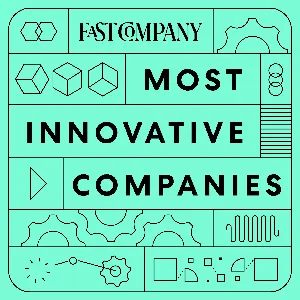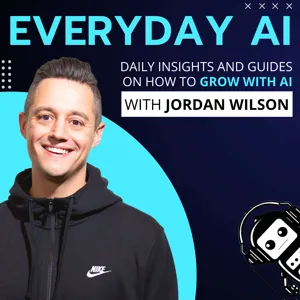Podcast Summary
Design's Impact: Balancing Good and Harm: Design can bring about positive change, but it's crucial to recognize its past mistakes and strive for respectful designs that value all relationships
Design, when used as a force for good, can bring about significant change in business and society. However, it's important to recognize that design's impact is not always linear or positive. The panelists discussed the importance of respectful design, which values all relationships and seeks to counteract the disrespectful ways design has been used in the past, particularly towards indigenous, black, and racialized communities. They highlighted examples of design's failures, such as the appropriation of indigenous motifs and the invention of the cotton gin, which contributed to harmful consequences. The panelists emphasized the need for the design industry to acknowledge its past mistakes and make amends, as well as strive to create designs that respect and value all relations.
Promoting diversity in design broadens scope and includes unique perspectives: Designing respectfully and aware projects that acknowledge connections fosters inclusivity and prevents harmful decisions
Promoting diversity in design is crucial for creating an inclusive and equitable future. This not only broadens the scope of design but also allows individuals from underrepresented communities to contribute their unique perspectives and prevent harmful decisions. Regarding sensitive projects, respect and humility are essential, but it's important to acknowledge that these institutions may serve as platforms for conflict. Designing respectful and aware projects that bring people together, even without fully resolving differences, can be a significant step forward. As Jake mentioned, the 9/11 Memorial Museum is an example of this approach, where names were arranged to acknowledge connections between victims. While design may not have all the answers, a commitment to working together and respecting diverse viewpoints is a valuable first step.
Designing for complex histories: Hyde Park Barracks and Greenwood Rising: Designers must acknowledge and address complex histories honestly, allowing for recognition and commitment to reconciliation and progress.
Design projects with complex and challenging histories require sensitive and thoughtful approaches. The Hyde Park Barracks in Sydney, Australia, for instance, is a UNESCO World Heritage site with a dark history of convict processing and housing, as well as a complex relationship with the Aboriginal community. Designers must acknowledge and address these histories honestly, allowing for recognition and commitment to moving forward towards reconciliation. This was also true for the Greenwood Rising project in Tulsa, Oklahoma, which addressed the centennial massacre and the issue of reparations. While some may argue for immediate reparations, designers can also play a role in bearing witness to these histories and ensuring they are never forgotten. By acknowledging and addressing these complexities, designers can contribute to important conversations and help pave the way for healing and progress.
Understanding history for reconciliation: Balancing client needs, user feedback, and democratic values in design projects requires sensitivity and careful consideration.
The collective understanding and public witness of history is crucial for reconciliation and moving forward. The willful forgetting of past wrongs is another form of holocaust that needs to be addressed. This is particularly important in America, which has a tendency to forget its past. In the context of design projects, resolving competing interests involves balancing the needs of clients, users, and stakeholders, while staying close to clients and gathering user feedback. The New York City subway map project, which involved making the map more accessible and democratic, presented unique challenges and taught valuable lessons. The web, as a more democratic platform, was a better solution for the project than creating an app.
Creating an accessible and up-to-date subway map for New York City: The team designed a digital map that adapts to users' data usage, saves offline versions, and prioritizes accessibility by highlighting stations with ramps and elevators.
The team behind the new subway map for New York City focused on creating an accessible and up-to-date solution to the complex and constantly changing subway system. They recognized the challenges of communicating changes effectively with traditional printed maps and instead created a digital map that can be updated in real-time. This map not only adapts to users' data usage but also prioritizes accessibility by saving map versions for offline use and highlighting stations with ramps and elevators. The team's commitment to inclusivity and user experience resulted in a significant improvement for New Yorkers and visitors alike. Additionally, the team acknowledged the importance of considering the unique challenges of New York City, such as the 24/7 operation and need for frequent maintenance, when designing the product. Overall, the new subway map represents a significant step forward in making the complex subway system more accessible and easier to navigate for everyone.
Designing for accuracy and inclusivity in complex projects: Ensure technology behind design handles unexpected situations, minimize negative outcomes, and innovate with a focus on user needs and well-being.
Accurate and inclusive design, even in complex projects like mapping systems, is crucial for effective communication. The challenge lies in ensuring the technology behind the design can handle unexpected situations while maintaining a polished and professional appearance. This not only applies to mapping systems but has broader implications for digital design as a whole. With the increasing importance and investment in design for competitiveness, it's essential to consider potential unintended consequences, such as addiction to screens and other negative effects. Designers are learning from these issues and working to create better digital products with the best intentions. The process involves trying to minimize negative outcomes while continuing to innovate and improve through trial and error.
Understanding the impact of design on vulnerable users: Designers must prioritize the needs of vulnerable users and strive to create designs that empower and enhance their experiences, while also addressing any unintended negative consequences.
Design is an ever-evolving process that requires continuous improvement and a deep understanding of users and their needs. Despite our best efforts, designs may not always be perfect and can have unintended consequences. It's essential to identify and prioritize the most vulnerable users and ensure that designs empower and enhance their experiences. The ongoing conversation about the impact of digital products and design discipline reflects a growing awareness and maturity in the industry. Measuring the success of a design involves considering its impact on the most vulnerable users and addressing any unintended negative consequences. By staying curious, asking questions, and listening to users, designers can strive to create designs that make a positive difference.
Listening to the edges and vulnerable populations: Designing inclusively means considering extreme cases and marginalized groups to create effective and representative designs, inspiring positive recognition and progressive change.
Listening to and addressing the needs of those who may not have historically had a voice in the design process is crucial for creating inclusive and effective designs. This includes looking into the edges, the extreme cases, and the vulnerable populations. By doing so, we can create designs that truly celebrate and represent all voices, leading to a sense of positive recognition and progressive change. This mindfulness and sensitivity are essential, as designers have the power to create affordances, systems, and objects that can make a difference. The intention to make a positive impact is where it all starts, and it's important to acknowledge and inspire that motivation in ourselves and our teams. Additionally, society as a whole can be seen as the ultimate client, and designing with their needs in mind can lead to meaningful and impactful creations.
Impact of inclusive design initiatives: Inclusive design projects can deeply impact individuals and communities when systemically embedded in institutions, leading to long-term support for underrepresented groups.
Design can have a profound impact on individuals and communities, particularly when it is inclusive and systemically embedded. The speaker shared their personal experience of working on a city map project during COVID-19, which deeply affected them and inspired a desire to create projects with significant impact. They also discussed OCAD University's Black Youth Design initiative, which aims to introduce design to underrepresented youth and prioritize support for black students and businesses. The speaker emphasized that these initiatives are not just one-time efforts but are systemically integrated into the university's structures, curriculum, and long-term planning. By doing so, the values of inclusivity and support for underrepresented communities become an integral part of the institution and its students' mindsets.
Design's role in repairing relationships and instigating change: Design's impact in the next decade will be on addressing the climate crisis through mycelium networks, shifting design's role to a networked, nurturing one for survival.
Design has the power to repair relationships and bring about institutional change when values are deeply embedded into every aspect of an institution. This change can attract more individuals who want to contribute to this institutional shift, leading to a virtuous cycle of growth and progress. In the next decade, design's most significant impact is expected to be on addressing the climate crisis through mycelium networks, which reframe design's role from a master-slave relationship to a networked, nurturing one. This shift in understanding will be crucial for the survival of various species. Thank you to our panelists for their insightful discussion on this topic. For more information, please visit abrams.com or read an excerpt on fastcompany.com. The book can be purchased at bookshop.org or any online bookstore.






